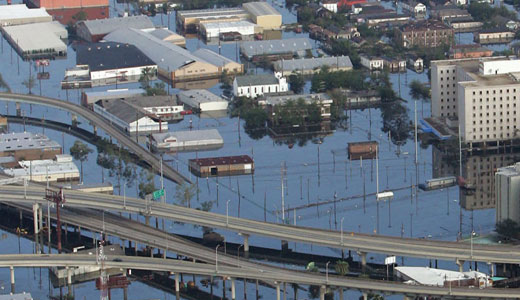
A statewide poll on Louisiana’s 2012 Coastal Master Plan has revealed that 86 percent of the 801 residents surveyed support a legislative vote for the plan, which was put forward by the state’s Coastal Protection and Restoration Authority. The plan would fix significant environmental problems and repair the state’s receding coastline.
The survey, conducted by Southern Media and Opinion Research, also showed that 91 percent of correspondents believe Louisiana’s coast and wetlands are very important to it.
The 50-year plan’s goals include developing strategies to protect coastal areas from hurricane flooding, building new coastal land, protecting the area’s culture and ensuring job growth, and calling for improved levees in highly populated areas. It would also create a long-term program involving raising buildings out of potential flood zones.
The plan was developed after a two-year period of analysis involving some of the best scientists in the state, joined by national and international environmental specialists. From the results of the study, 109 projects were selected, each showing that it could benefit the community and ecosystem over the coming years.
This, more than anything, is a direct response to the land loss crisis Louisiana is going through; since the 1930s, 1,880 square miles of land have been slowly eroded, which reportedly interferes with the lives of coastal residents, particularly during storms.
Some of the problems with the proposed plan were laid out by a leading member of the International Brotherhood of Electrical Workers, many of whose members fish not only the waters of the Gulf of Mexico but also in the waters of the Louisiana bayou.
Chad Lauga, political director for the union’s Local 130, and, himself a fisherman, said the plan will create jobs and is “a step in the right direction” but that “there are problems with it. They need to bring together a diverse group of people for a project like this, and I feel like the fishermen have been left out of it.”
They’re going the wrong way about this, he said, and as a result, “it’s going to kill the oyster industry. They’re going to put in all these large diversions,” and that, he said, is the big issue.
A diversion dam essentially diverts the flow of water from its natural course. The scientists involved in the project saw doing this as a means of restoring the coastline, via redirecting the water current. That, however, will bring fresh water in, killing all of the oysters.
“The fishing industry can’t handle the diversions. Instead of building that, they should be building a channel off the Mississippi River, containing where the water [from the Louisiana Coast] goes – that would build new land almost 50 percent faster than a diversion.”
Still, Lauga noted, the Master Plan isn’t all bad; in fact, he remarked, there’s a bill in the legislature that would potentially create lots of local construction jobs. “So yeah,” he said, “we’re coming leaps and bounds from where we were five years ago.”
What could have been remedied, though, he pointed out, was including fishermen in the initial consulting phases for the plan. “You need to bring everybody to the table, not just the scientists. Fishermen know that bringing in fresh water will kill the oysters. They’ve been trying to tell that to scientists and engineers, but they’re being left out of the process.
“It’s not that it’s a bad plan,” he concluded. “It’s just about who’s in control.”
Photo: Repairs to the Louisiana coastline and levees would potentially protect a repeat disaster, like Hurricane Katrina. David J. Philip/AP

MOST POPULAR TODAY

High Court essentially bans demonstrations, freedom of assembly in Deep South

U.S. imperialism’s ‘ironclad’ support for Israel increases fascist danger at home

Zionist organizations leading campaign to stop ceasefire resolutions in D.C. area

UN warns that Israel is still blocking humanitarian aid to Gaza

Resource wars rage in eastern Congo, but U.S. capitalism only sees investment opportunity






Comments